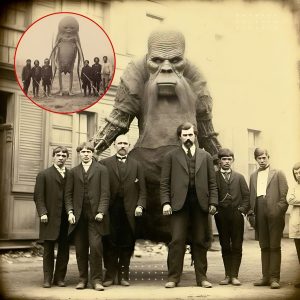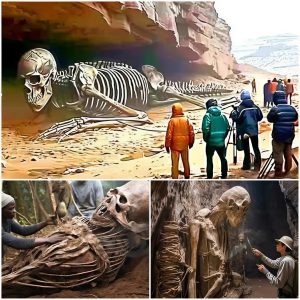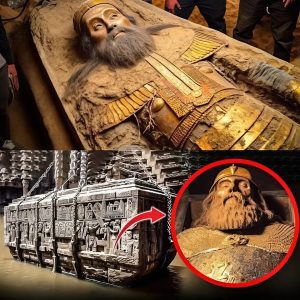A Warrior’s Final Battle
In the heart of medieval Europe, where battles were fought with sword and shield, one warrior met a violent and tragic end. For centuries, his remains lay undisturbed, his story lost to time. But now, thanks to the incredible advancements in forensic science, we are finally able to uncover the brutal truth behind his death. A remarkable facial reconstruction has brought this warrior back to life, revealing not only his features but also the devastating axe wound that ultimately killed him.

Unearthing the Past
The remains of this medieval warrior were discovered in a forgotten burial site, deep within the ruins of an ancient battlefield. The skeleton, found in a shallow grave, bore the unmistakable signs of a life lived on the edge—broken bones, healed fractures, and the telltale marks of countless skirmishes. But it was the skull that told the most harrowing story.
The skull bore a deep, crescent-shaped gash—a wound that could only have been inflicted by a heavy, bladed weapon, likely an axe. The force of the blow had cleaved through the bone, leaving a brutal reminder of the violence that claimed this warrior’s life. Forensic experts quickly realized that this was no ordinary injury; it was a fatal wound delivered with enough power to end a life instantly.
Bringing the Warrior to Life
To better understand the warrior’s final moments, a team of forensic artists and archaeologists set out to reconstruct his face, using cutting-edge technology to digitally recreate his features. The process was painstaking, involving the careful study of the skull’s structure, the placement of muscle and tissue, and an analysis of what his appearance might have been based on historical and genetic data.
As the reconstruction progressed, the warrior’s face began to emerge—a stern, battle-hardened visage that spoke of a life spent in the throes of conflict. His brow was furrowed, his jaw strong, and his eyes seemed to hold the weight of a thousand battles. But it was the gaping wound across his face that drew the most attention—a grim reminder of the fatal strike that ended his life.
A Glimpse into a Violent Era
The facial reconstruction not only gives us a glimpse into the past but also offers invaluable insights into the brutal realities of medieval warfare. This warrior’s death was not a peaceful one; it was a brutal and bloody end that was all too common in an era defined by violence and strife. The axe wound tells a story of close-quarters combat, where the difference between life and death was often decided by a single, powerful blow.
Historians and archaeologists are now using this reconstruction to learn more about the warrior’s life. Was he a knight defending his lord’s castle? A mercenary fighting for coin? Or perhaps a common soldier caught in the endless tides of medieval warfare? While we may never know his name or the exact circumstances of his death, the reconstruction provides a hauntingly vivid portrayal of his final moments.
A Warrior Remembered
The revelation of this warrior’s face has captivated both historians and the public alike. It serves as a powerful reminder of the human cost of the conflicts that shaped our world. The reconstructed face, with its deep-set eyes and grisly wound, humanizes a figure who might otherwise have remained just another anonymous skeleton in a forgotten grave.
The warrior’s story, brought to life through modern science, also underscores the importance of forensic archaeology in unraveling the mysteries of the past. Each discovery, each reconstruction, adds a new layer to our understanding of history, turning bones and artifacts into real people with real stories.
Lessons from the Past
As we look upon the face of this medieval warrior, we are reminded of the fragility of life and the enduring nature of human conflict. His story, though rooted in the past, resonates with the present, offering lessons about the costs of war and the sacrifices made by those who lived and died by the sword.
In the end, the incredible facial reconstruction is more than just a scientific achievement—it’s a tribute to a life lost in battle, a life that might have been forgotten if not for the tireless work of archaeologists and forensic experts. This warrior, once a nameless figure in history, now stands as a symbol of the countless souls who fought and died in the tumultuous world of medieval Europe.
And as we gaze upon his reconstructed face, we are reminded that every skeleton, every relic, has a story waiting to be told—a story of life, death, and the indomitable spirit of those who came before us.





